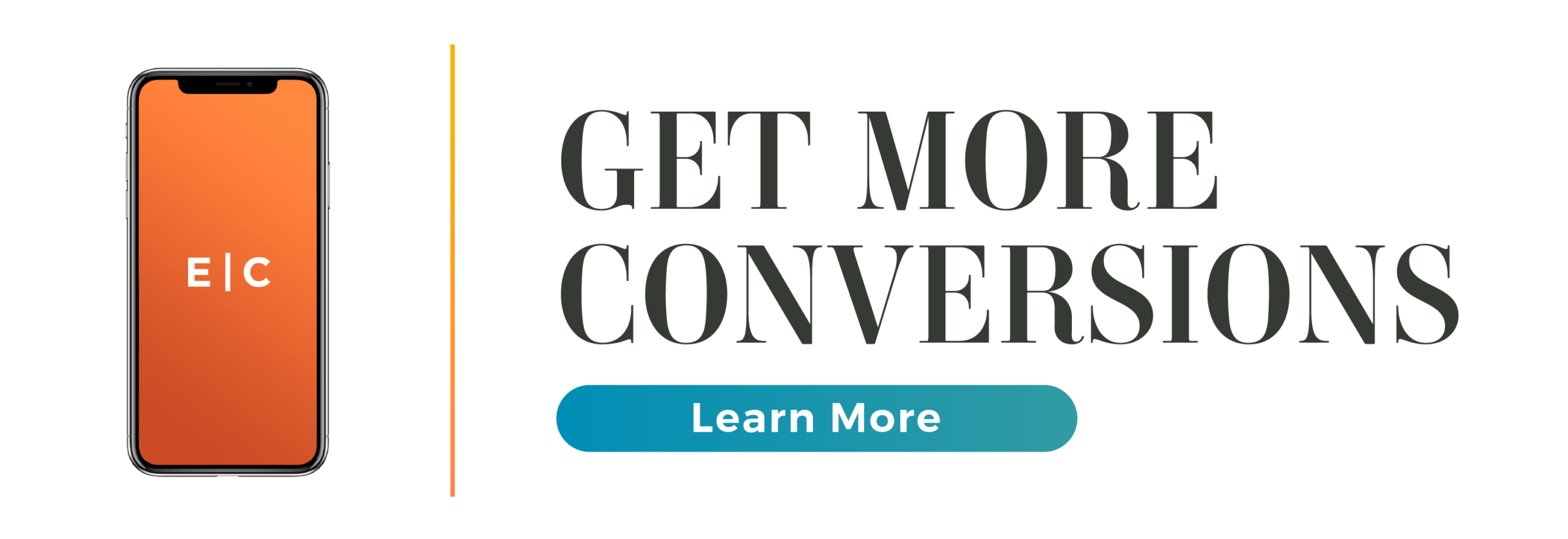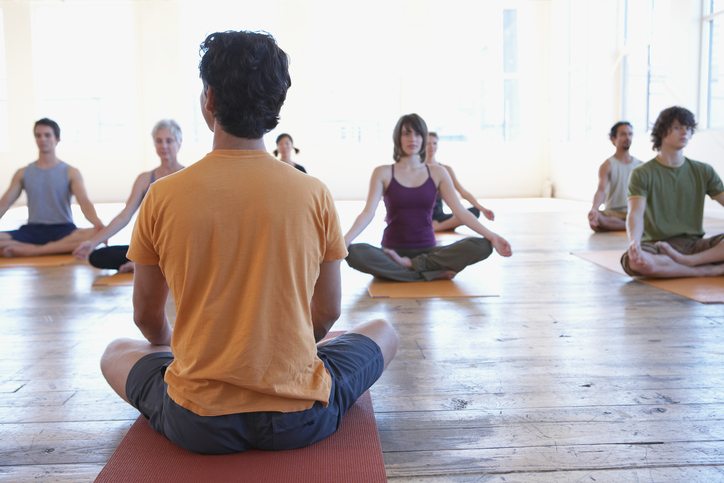A few weeks ago, I bit the bullet and purchased a one-month unlimited yoga pass. As I started practicing with more consistency and concentration than I ever have—truly taking in the tenets of yoga as well as the poses—I realized something awesome. The same principles yogis adhere to on and off the mat could be incredibly useful to business owners in their marketing efforts. Here’s some marketing tips every yogi knows that professionals can learn from:
ONE: There’s value in setting an intention.
At the beginning of every great yoga class, the teacher encourages his or her students to “set an intention” for their practice. Before the challenging physical movement starts, it’s a way to pause and get into the right state of mind. The intention can be a quality to embody (like stillness), a person to dedicate the practice too, or anything else. What matters most is that the yogi considers his or her broader purpose in showing up for class rather than just going through the motions.
How it translates into marketing tips:
Simply put, don’t just jump headfirst into anything. With everything you do, think about what you really want to accomplish, and not just in a facts-and-figures “bottom line” way. What is your broader mission for your business? Why are you here? If you don’t already have a brand purpose, a mission, and an aspirational vision, join together with your team to create them. Circle back to them frequently. (As yogis say, “Remember your intention.”) When it comes to individual tasks, ask yourself why—with a capital W—you’re doing them. If the answer is simply, “That’s how we do it here,” that’s not good enough.
TWO: The pose is the tool, not the goal.
There’s a common misconception about yoga from non-yogis: it’s all about confining yourself into twisted shapes, and being “good at” yoga means doing the poses “correctly.” This is far from the truth. Yoga poses in themselves are not the point of yoga; they are a means to achieve other more important things like expansion, breath, and good health. The goal isn’t to be flexible, but to create more ease of movement—and for physical flexibility to inform more mental, spiritual, and emotional openness. For that reason, a yogi should strive for expressions of poses that feel right in his or her body. Adjusting poses for to eliminate pain and create a better stretch isn’t a cop-out. It’s the only way.
How it translates into marketing tips:
Tactics and tasks are the tools to achieve something greater; they aren’t “greatness” itself. When executing something as small as a single social media post or as planning something as large as an entire marketing campaign, consider your more global goal. There are best practices for how often you should post on a given social channel, for example, but strict and blind adherence to those practices ignores the purpose of their existence. Adjust the tactical elements of your business’s marketing strategy to suit what’s best for your business at a given time. See the day-to-day stuff as “postures” toward your growth, not boxes to be checked according to an arbitrary standard of perfection.
THREE: There’s no need to look around the room.
Many yoga classes are packed with people; many yoga studios have mirrors. As much as the practice demands concentration and self-reflection, every yogi has experienced the temptation to scan the room to see what others are doing. (Is my leg higher? Is her stance more stable?) The truth is, though, that someone else’s practice has literally nothing to do with our own. We all practice in the same room, but yoga is not a competitive sport, or a sport at all. It’s a journey of individual exploration where we’re both our biggest advocate and our biggest obstacle.
How it translates into marketing tips:
This one isn’t a perfect analogy. As a business, you have competitors and you should definitely be invested in what they’re doing (and how they’re doing it differently and better). That’s why, in developing our inbound marketing action plans for our clients, we do an in-depth competitive analysis. At the end of the day, though, your business’s biggest competitor should always be your own business. No matter how standard you think your business is for its industry, it has differentiators. Identify what they are and make the majority of your work to be a better version of your own business. If you focus merely on one-upping or keeping up with competitors, your audience will catch on and you’ll be nothing more than a sub-par copy. Just as a yogi should meet himself and his or her body where it’s at, meet your business where it’s at.
FOUR: Practice every day.
“Oh, I just dabble in yoga,” said no yogi ever while in a challenging inversion. Truly advancing one’s yoga practice means practicing every damn day. Like literally anything worth doing, yoga requires more than just showing up. Physically, mentally, and emotionally demanding, doing yoga in its most honest form means making asanas (poses) and prana (breath) part of one’s daily routine. It means bringing yoga off the mat and incorporating principles of yoga into one’s thinking (the way we are right here).
How it translates into marketing tips:
“Doing marketing” for your business means you can’t just be a marketer when you feel like it. Sure, you may have no choice but to wear multiple hats, but you have to think like a marketer to do it well. At the same time, be conscious of the fact that the tactics behind strategy are useless without consistency. Blogging is a great way to drive traffic to your site, but sporadic blogging doesn’t help you. Social media is a killer way to engage with your customers, but you actually have to have an active presence for it to make an impact. Businesses have come to us many times with a great foundation that they eventually neglected. It’s a lot harder to build momentum back up than to simply keep it going.
FIVE: There’s a difference between pain and discomfort.
Ask any yogi if pigeon pose sucks. If they say it doesn’t suck for them now, they will probably admit that there was a time where it did suck. Because yoga challenges what each yogi thought they were capable of (again, for the sake of growth), discomfort along the way is inevitable. By nature, your body wants to retreat back to familiarity and comfort as it is pushed to new limits. Yoga teachers will encourage their students to surrender to that discomfort, to witness it and then let it pass. In the world of yoga, pain is different. We shouldn’t intentionally put our bodies through pain. When we feel pain, we should interpret it as an alert that that expression of the pose isn’t right for us, and we should find a way to adjust our positioning.
How it translates into marketing tips:
Here’s what we see all the time: businesses are excited by the idea of their own growth, but when it comes time to actually make changes, they get squeamish. Change means risk; trying something new means not knowing what to expect. Executing a digital strategy for the first time? There will be discomfort. Customers will ask difficult questions and will sometimes leave unfavorable reviews out in the open on social media. Here’s the bright side, though: as long as it isn’t literally hurting your business, it’s all a healthy part of your evolution. Experiment slowly and intentionally and when it does hurt, adjust your positioning.
SIX: Using props isn’t “cheating.”
Most yoga studios are stocked with props like straps, blocks, blankets, and bolsters. For years, I avoided them. Using a block to lift the ground higher felt like cheating. Instead, I struggled and stumbled through poses because I reasoned that it was at least closer to the “real” thing. In actuality, though, the purpose of props is to advance and challenge our practice, not stagnate it. Using blocks has enabled me to go deeper into poses and I now use them confidently. What matters is using props intelligently, understanding their place within the context of yoga, and not using them as a crutch to avoid effort.
How it translates into marketing tips:
Full disclosure and no shame: our agency uses tools. From Buffer to schedule social media posts when we’re sleeping, to Asana to keep track of the whole team’s tasks, to our beloved Hubspot for all-things inbound marketing, our canon of tools is the equivalent of yoga props. And you know what? We think you should use them too. Not only do the right tools free up more time to develop brilliant strategy, but they enable you to execute your current strategy better. Remember, though: tools, like props, shouldn’t be a way to avoid effort. If you’re using a tool to automate social media, it’s not a replacement for posting—and interacting—manually in real time.
What I love most about yoga—even more than the post-practice high—is how flexible (pun definitely intended) its principles are. I never thought my yoga-life would collide with my life as a marketer, but alas, it has. I hope what I’ve learned helps your practice as a marketer, too.

-FINAL(01-00)-White&Blue-01.svg)




